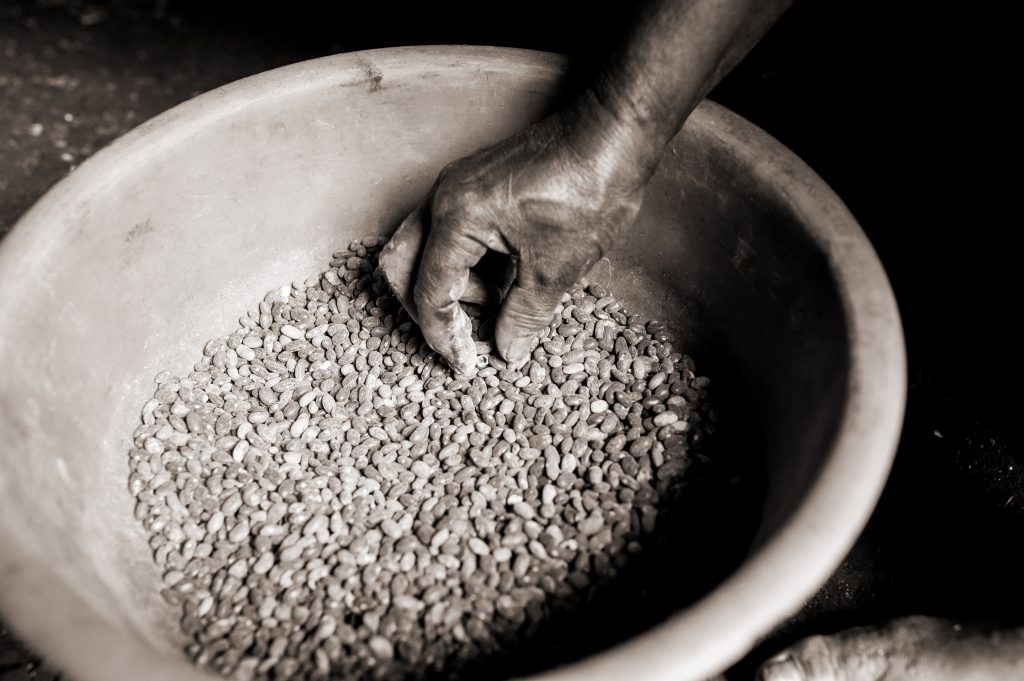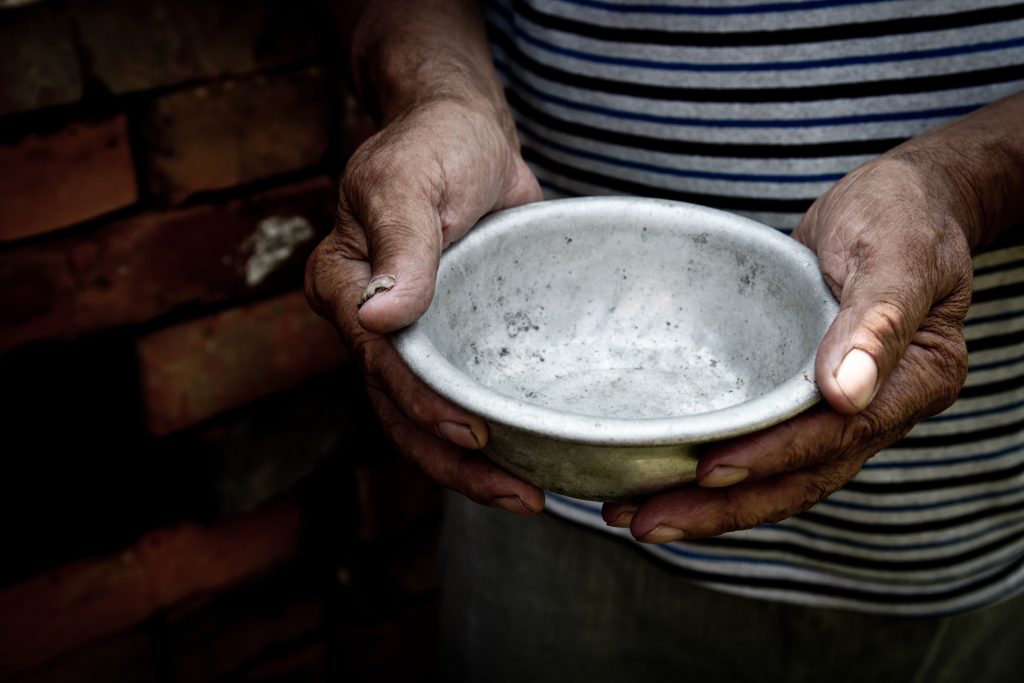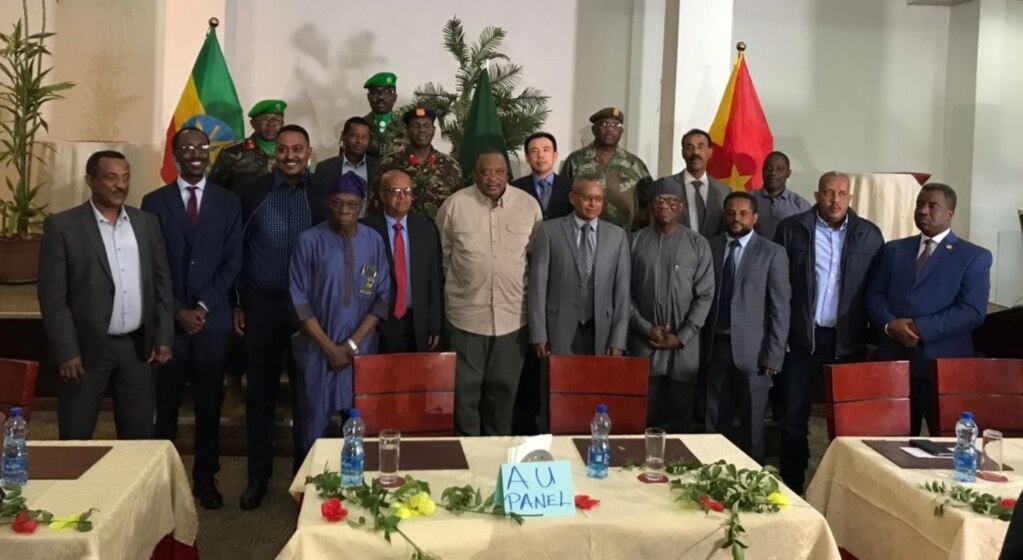By Fetien Abay and Biadgilgn Demissie
The devastating effects of the war on Tigray have been witnessed by the people of Tigray, but are still hardly known to the world. Out of the news, Tigrayans are facing another year of famine – almost certainly even worse than what they have endured over the last 18 months. A year ago, the early consequences of the onslaught heralded unbearably painful man-made famine afflicting the citizens. The impact was particularly severe on women, children and the elderly. The ongoing blockade exacerbated the situation. No serious action has been taken by the international community to stop the descent into mass starvation. The stress on Tigray’s food system is again escalating due to a critical shortage of essential inputs for the 2022 growing season including fertilizer and seeds. Without immediate large-scale action we are certain to suffer untold proportions of civilian morbidity and mortality, on a scale that surpasses the 250,000 or more needless deaths of the last year.
Impact on Agriculture
Agriculture, the livelihood for millions of people in Tigray, has been devastated by a war of starvation. In the three decades prior to the war, Tigray had made substantial gains in agriculture and natural resource conservation using strategies of soil and water conservation, genetic conservation, reforestation and rural and urban electrification. Agriculture had been growing on an average of 4% per annum in an economy that was growing at 8.1% between 2016 and 2019. Agricultural inputs coupled with effective extension services had enabled the production of 18,169,585 quintals of cereals and legume crops by 2019/2020, a year prior to the war on Tigray (CSA, 2020).
All those gains have been shattered by the war. A report from the Tigray Institute of Policy Studies (Ashenafi et al, 2021) states that 81% of farming households have been affected through wide-ranging destruction such as looting, burning, and destruction of crops and farm implements “43.7% of the damage on crops was before harvesting on the farm, 40.7% from the home storage and 7.8% were on the threshing floor” (Ashenafi et al, 2021, p10). Of all households in Tigray, 48.3% were unemployed households in 2021 compared with 5% in 2020. Agriculture’s ability to provide employment fell from above 40% to below 27%, and private sector and self-employment declined by 75.5% and 59.3%, respectively (Araya & Yibrah, 2021).
History of Innovation and Conservation
Tigray is a land with a heritage of agricultural innovators and conservators who won international prizes. The village of Abraha-We-Atsbaha won the UN Equator Prize for Sustainable Dryland Management in 2012.
This village, led by a non-formally educated innovator farmer called Aba Hawi, recovered its entire watershed from nearly tree-bare cover into a world-recognized forest cover and enhanced its water table reservoir to a significant level; In 2012, Ato Gebremichael and the people of Abraha Atsbeha were awarded the UN Equator Prize. Today, the experience has led to spread of the principles of sustainable agriculture.
Another non-formally educated farmer, Haregu Gobezai, a mother of six children, won the Impactful Rural Women in Agriculture prize for her innovation in integrated farming. She transformed 12 hectares of barren and neglected land into fertile land through silt deposition and organic fertilizer application and established “Haregu Rama Organic Fruit Farms”. She planted seven varieties of mango trees to meet different demands of consumers and produced 250 tons of mangos per year with a sale value of 1-2 USD/kg. She employed 13 permanent workers and 50–60 part-time workers including university students from the area. Her farm served as a training center.

A farmer-led innovation in fruit grafting by women was also recognized for producing high-quality guava trees.

The Irob community in northeast Tigray is known for its conversion of steep mountain gorges into fertile farmland. Known as ‘soil-makers’, the Irob community is a world-class example for land reclamation and soil conservation. Each household practices soil conservation and has water-harvesting ponds. In monasteries, they produced export-quality oranges on the fertile land they had created. However, not only the farmers but also their trees fell victim to the war: the trees were cut and destroyed.

Tigray represents part of Abyssinian gene center with diverse, rich heritage and conservators culture. Farmers are known for being excellent seed conservators. They also showed themselves to be early adopters of new agricultural technologies that enhance productivity.

Tigray is a source of diversity and a place of interaction of diverse ecological, diverse crops and farming knowledge. It is an exemplary region for inclusive integrated research for development through effective farmers and research partnerships.

Food production in crisis
A study by Mekelle University and the Tigray Bureau of Finance and Economic Development (BoFED, 2020) stated that 75% of urban residents and 54% of rural households used to have enough food for 10–12 months of the year before the war started. All these hard-working innovators, farming communities and their leader farmers are now severely hit by the war and man-made famine and have been turned into beggars. It is heartbreaking to see such proud, world-class farmers and communities reduced to starvation, destitution and death.
After being reinstated in June 2021, the Government of Tigray has made exemplary efforts to build on conservation agriculture and make sure that arable land is plowed and sown. There has been a massive campaign to get the job done, including labor provided by the Tigrayan fighters, allowing the villagers to till and sow their neighbors’ plots, and mobilizing universities, private firms and other institutions to till and sow the lands using tractors.
Unfortunately, the average harvest of 2021 was very low, only 33% of a normal crop, as farmers were not able to manage their land due to the war (Demissie et al., 2022).This is not surprising, given the backdrop of the difficulties posed to agriculture by COVID-19, the worst invasion of desert locusts in the last 25 years, the denial of fertilizer and pesticides, the non-functioning of the extension service, and the calamitous direct impacts of the war. For a fertilizer-dependent agriculture that used a minimum of 100kg of chemical fertilizer and 125kg of improved seed per hectare as standard before the war, applying 10kg of fertilizer and 10kg of seed was of little use. But in addition to scarcity of inputs, the poor harvest was attributed to late distribution and improper utilization of inputs, poor land preparation, insect infestation and technical failure (MASARR, 2022).
The war had a differential impact
on the zones and weredas (districts) of
Tigray, the Central and Eastern Zones being the worst hit. Average productivity
of weredas for example Ahesea was
as low as 15.4% of the expected productivity. Yechela (21.1%), Tanqua-Milash
(21.4%), Endaba-Tsahma (22.4%) and Yechila (22.2%) in the Central Zone
and Saesie (25.9%)
in the Eastern Zone have seen the worst productivity decline because of the war
(MASARR 2022).
Despite all of this cumulative damage to the agriculture sector, the harvest of 2021 was a lifesaver for millions of people in Tigray. When the crops were harvested in the last months of 2021, they were distributed equitably across the region, and halted—for a few months—the slide towards mass starvation. A survey by Ghent University recently reported that the population of Tigray as a whole had suffered between 250,000-500,000 deaths in excess of normal levels 2021 (Nyssen 2022a). This qualifies as a famine no less severe than in 1983-85, in which about 1 million people perished across Tigray, Wollo and neighboring provinces. Had it not been for the last harvest, we would have already witnessed an unprecedented number of deaths.
The starvation in Tigray is out of the news, because there has not been a single foreign journalist in Tigray for more than 10 months and humanitarian workers are forbidden from reporting on what they see. It is also out of the news because the last harvest provided a short-term buffer, which is now being fast consumed.
Productive activities are devastated. For example, Tigray was known for its honey production. Introduction of modern beehives enables households to earn additional income from the unique white, organic honey produced from the local shrubs. Honey was not only being supplied to local markets; it was also an earner of foreign currency. Tens of thousands of farmers in the eastern, central and southern parts of Tigray gained substantial income from honey. Distressing reports are coming in that most of the bee colonies (roughly 70%) have been destroyed during the war (Nyssen et al., 2022b). Reports from local honey vendors reveal that honey is still expensive in local markets, despite the money shortage, because of the significant drop in supply from farmers. According to very conservative estimates, it will years for beekeeping to recover to the level it had reached before the war.

Female headed households & unemployed university graduates have also been assisted with beehives
Trench bunds “bank” water in the soil in the rainy season, raising the water table so that irrigation is possible in the dry season, Abrhatsbha Village (Aba-Hawi standing)
The worst of the agricultural depression is yet to come, given the continuation of the blockade. In almost all parts of Tigray, reserve seeds and irrigation structures have been destroyed, oxen slaughtered, crops and farm implements burned, and most of the labor force has been redirected to the war. All these afflictions are bound to become worse.
But the above-mentioned challenges are just the tip of the iceberg. Agricultural markets and supply chains established in the last three decades have been destroyed during the war. Access to credit is cut off – no money circulates in formal or informal financial institutions. The livestock population has been decimated: most draft animals were slaughtered by the invading armies, pack animals were looted for war purposes and animal-health structures such as clinics (88% damaged and looted) and feed-production plants destroyed. Employment in non-farm activities and in business and industries is stymied.
The coming summer is set to herald a yet deeper spiral of famine that kill many more and will take years of effort to reverse. Last year’s harvest was low, but the upcoming harvest threatens to be non-existent. At least some fertilizer and improved seed were available last year, but these inputs are totally lacking for the upcoming planting season. Farmers are eating their reserve seeds. Without national and global intervention, the situation will not improve.
Urgent call to action
If Tigray’s agriculture is not supplied with improved seed, fertilizer, plow implements and low-cost machinery to replace the lost labor, then its food production system will be completely interrupted. The local seed reserves will have been exhausted and it will take years to re-acquire them; this will have an enormous negative impact on agricultural biodiversity in Tigray and will make self-revival of agriculture almost impossible. Tigray’s agriculture – which had been known for its resilience, innovation and conservation of traditions – will collapse.
Hence, friends of agriculture across the continent and the world have to unite – and unite quickly – to assist the severely wounded agriculture of Tigray. If Tigrayan farmers are not supported in the upcoming rainy season – which begins this month the long-season crops, and June–July for the short-season crops, Ethiopia and the world have to prepare to provide food aid to feed more than six million people for many years to come. All national, continental and international efforts to reviveTigray’s agriculture must coalesce and act now because if not, we will have nothing but a recipe for perpetual famine. Tigray has a rich agricultural heritage that can serve as the foundation for collective action.
References
Abay KA, Tafere K, Berhane G, Chamberlin J, Abay MH. (2022). Near-Real-Time Welfare and Livelihood Impacts of an Active Civil War: Evidence from Ethiopia. Policy Research Working Paper 10004. Development Economics, Development Research Group. World Bank Group. https://doi.org/10.2499/p15738coll2.135056
Abay F. 2020. Women Farmer-Breeder Partnerships in Plant Breeding, Seed, and Food Innovations: Experiences from Tigray, Northern Ethiopia In Takoi Khemais Hamrita (editor Women in Precision Agriculture Technological breakthroughs, Challenges and Aspirations for a Prosperous and Sustainable Future) ://doi.org/10.1007/978-3-030-49244-1_1
Araya M, Yibrah H. 2021. Assessing the Effect of War on Food Insecurity & Welfare: Evidence from Selected Woredas of Tigrai. Mekelle, (Unpublished Report)
Ashenafi M, Aklil A, Belay M, Negasi S. 2021. War damage Assessment on Smallholder Agriculture and the Imperative for Post-War Reconstruction of Tigray. Mekelle (unpublished report)
BoFED (Bureau of Finance, Economic Development) Annual Report 2020
Central statistical agency (CSA). 2020. Agriculture sample survey on livestock and livestock characteristics, Volume 2, Addis Ababa Ethiopia
Demissie B, Nyssen J, Annys S, ENegash E, TGebrehiwet T, Abay F, Wolff E. 2022. Geospatial solutions for evaluating the impact of the Tigray conflict on farming. Acta Geophysica. https://doi.org/10.1007/s11600-022-00779-7
Multi Agency Seasonal Assessment Regional Report (MASARR). 2022. Food Security & Agriculture: Duration 16 November – 07 December 2021. Mekelle (Unpublished Report)
Nyssen J. 2022a, Documenting the humanitarian situation and civilian mortality in the Tigray war — Presentation at a hearing organized by the Health Professionals Network for Tigray, 4 April 2022, DOI:10.5281/zenodo.6414225
Nyssen J, Negash E, VanSchaeybroek B, Haegeman K, Annys S. 2022b. Crop Cultivation at Wartime – Plight and Resilience of Tigray’s Agrarian Society (North Ethiopia). Defence and Peace Economics. https://doi.org/10.1080/10242694.2022.2066420

Fetien Abay is former interim president and professor of crop science at Mekelle University (Ethiopia) since 1993. She is an award-winning scientist, recognized by African Union, and numerous think tanks, research institutes, universities, and NGOs by means of grants, fellowships, awards, and appointments who has performed outstanding research in plant breeding, food processing/nutrition, post-harvest loss reduction that has enabled Ethiopian farmers’ access to quality seed of improved barley varieties. Fetien is the third female professor of the country and the first woman in Ethiopia who has reached the professor’s rank in Plant Breeding and Seed Sciences. She earned her BSc from Haramaya University, Master’s in Rural Resource Management from the University of Wales (Bangor-UK) in 1995 and later a Ph.D. in Plant and Seed Sciences from the Norwegian University of Life Sciences in 2007.

Biadgilgn Demissie is an associate professor of physical Geography and Geoinformatics at Mekelle University. He was the director of the Institute of Geoinformation and Earth Observation Sciences, Mekelle University (2018-2021). He obtained his PhD from Ghent University, Belgium in 2016. Currently, he is a Postdoctoral Researcher working with the Geospatial Analysis Research Team, Institute for Environmental Management and Land Use Planning, Faculty of Sciences, Universite Libre De Bruxelles, Belgium. He is a board member of the Global Society of Tigray Scholars and Professionals (GSTS) since 2018 and chairs the Geospatial Science and data management theme.
Photos courtesy of Fetien Abay



